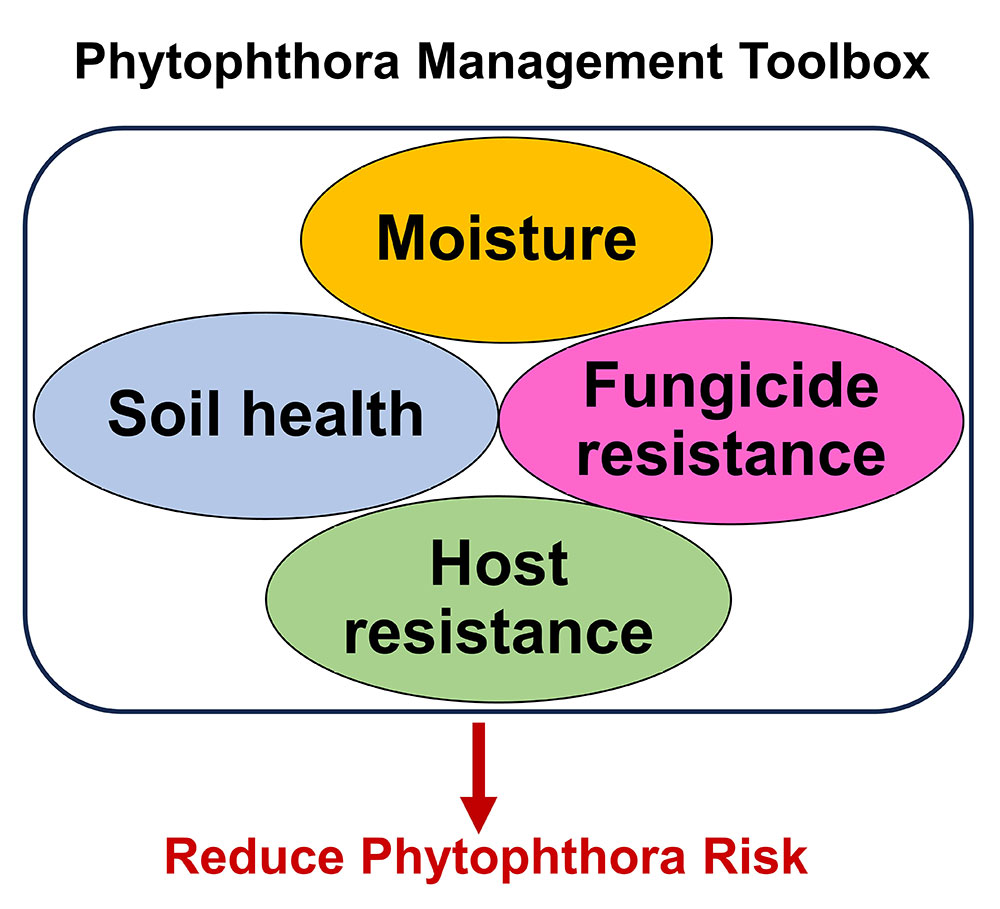PMRI Components
Phytophthora inoculum level
The presence of Phytophthora capsici in soil is fundamental to the development of Phytophthora blight. As described above, Phytophthora toolbox contains several structures that enable the pathogen to survive, reproduce, spread, and infect plants. This pathogen will always be present once introduced in a production environment. The populations of the pathogen may reach high levels and cause severe crop loss. Reducing the levels of inoculum of P. capsici in soil and irrigation water is of paramount importance in reducing the risk of disease development. For more information on reducing inoculum in soil, see the following publication: “Genetic soil disinfestation, a conceptual framework to reduce inoculum potential of soilborne plant pathogens” or email ssanogo@nmsu.edu
Moisture
Moisture is one of the driving forces for the development of Phytophthora blight. It directly affects the structures formed by P. capsici, the plant infection process, and the development of symptoms. For more information on the relation of moisture to Phytophthora blight, see the publication “Water management in relation to control of Phytophthora capsici” in vegetable crops” or email ssanogo@nmsu.edu

Host resistance
Resistance is the most effective way of reducing damage caused by P. capsici. Although the genetic resistance of P. capsici has been studied for several decades, very few commercial vegetable cultivars resistant or tolerant to this disease are available. Genetic resistance or tolerance has been shown to reduce disease incidence in many vegetable crops and is pivotal in the development of an integrated management system for Phytophthora blight. For more information on this disease, see the publication “Phytophthora capsici, 100 years later: research mile markers from 1922 to 2022.”
Fungicide resistance
Resistance to fungicides has been reported in Phytophthora capsici. The history of fungicide resistance in this pathogen is briefly presented in the publication: “Phytophthora capsici, 100 years later: research mile markers from 1922 to 2022.”
Soil health
Building a beneficial soil microbiome is an important component of soil health. In particular, building a beneficial soil microbiome may increase disease suppressiveness and lead to a reduction in soilborne diseases. For more information on the influence of soil health on this disease, see the following publications: